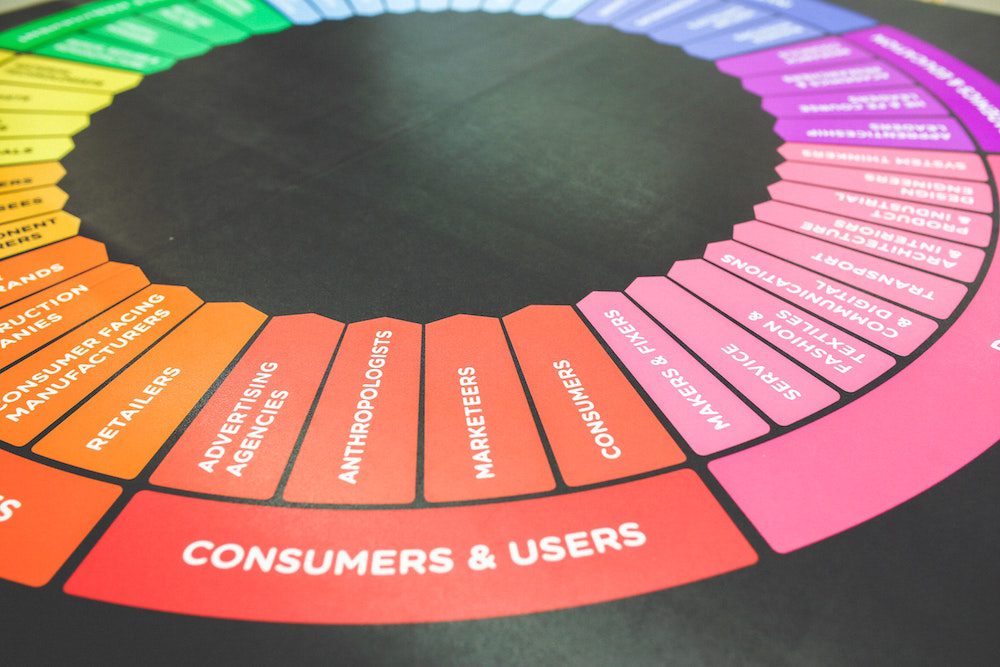Are Business School Neighborhoods Becoming More Gentrified?

When universities are found in downtown urban areas, gentrification most often follows. It almost seems inevitable since universities bring in more individuals with higher education, draw in more money, and increase new businesses. But what does the rapid increase of gentrification statistics mean for the business school students looking to start their career in a new area?
What Is Gentrification?
First, we need to look at what gentrification is. In simple terms, it’s the influx of more affluent residents moving into urbanized neighborhoods. At the outset, it may sound good, but it can be controversial.
Gentrification may improve the financial quality of a neighborhood, but it can also force the relocation of current residents and businesses due to increasing costs. Often, the process of gentrification also shifts a neighborhood’s racial and ethnic composition, as well as the average household income. This can lead to community displacement for lower-income families in gentrified areas, some of which often live in the area for several generations.
However, there is a grey area. Gentrification happens when a location becomes increasingly attractive. At that point, more high-income individuals move into the area bringing in investments in the community and leading to improved infrastructure and economic development.
What Causes Gentrification?
According to a recent comprehensive review of gentrification completed by researchers at UC Berkeley and UCLA, gentrification most often occurs when more public transportation is available. People are more attracted to transit hubs because they allow more privileged groups to trade car commutes for transit and signal a large-scale commitment to neighborhood upgrading, which, in turn, leads to increased employment opportunities.
Another spur to gentrification is education. Quality schools, universities, colleges, and medical centers tend to shape gentrification. The substantial federal support that public universities receive brings money into neighborhoods through many means including housing and housing subsidies for faculty and staff. A CityLab study revealed that universities and other academic institutions are key to attracting the creative class, creating more market demand and political pressure for better amenities, schools, and other services.
Analyzing University Neighborhood Gentrification Statistics
Since universities have such an impact on gentrification, we thought we’d take a look at what areas and schools have been most affected. While gentrification is not something most urban areas should aspire for, it happens, and it’s important to know where it’s occurring the most.
To find out, we looked at a recent study by RentCafe of the most gentrified areas in the U.S. The study took a look at the 2000 Census and the 2016 American Community Survey to see the changes that took place over a decade and a half across 1,000 U.S. ZIP codes. The study found that there are easy ways to quantify gentrification statistics when looking at median home value, median household income, and the population that holds a bachelor’s or higher degree.
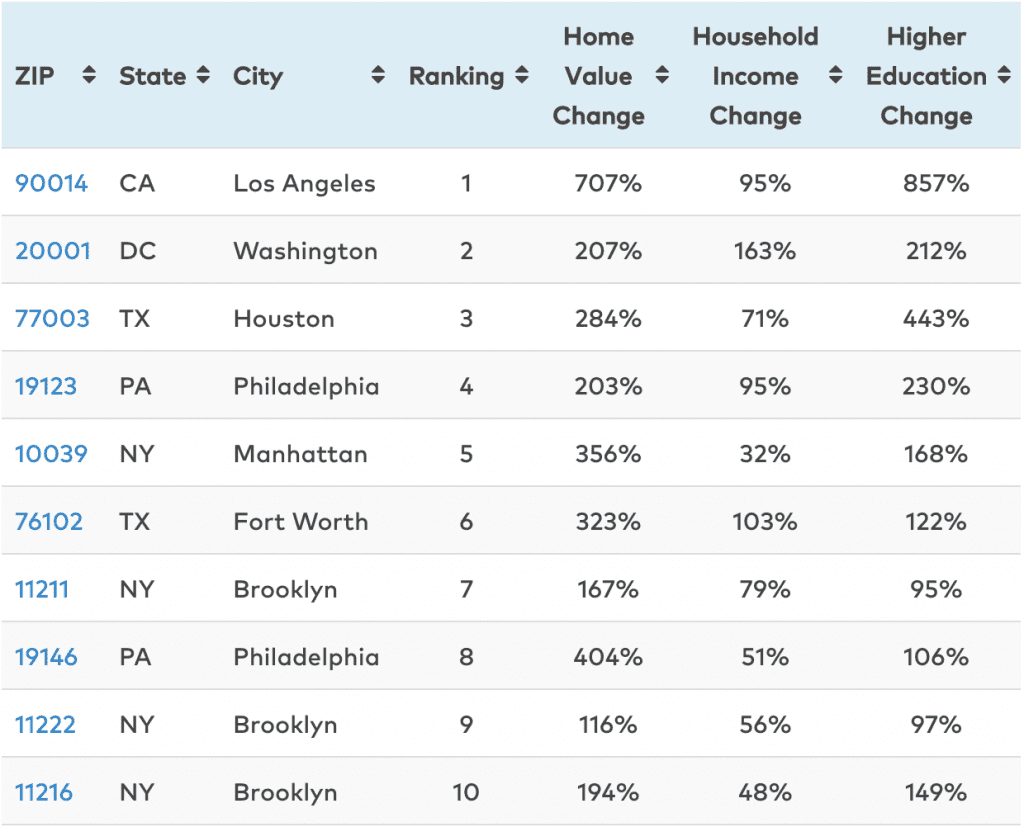
Based on the results of the study, we analyzed the top five MetroMBA universities in gentrified areas.
-
University of Southern California
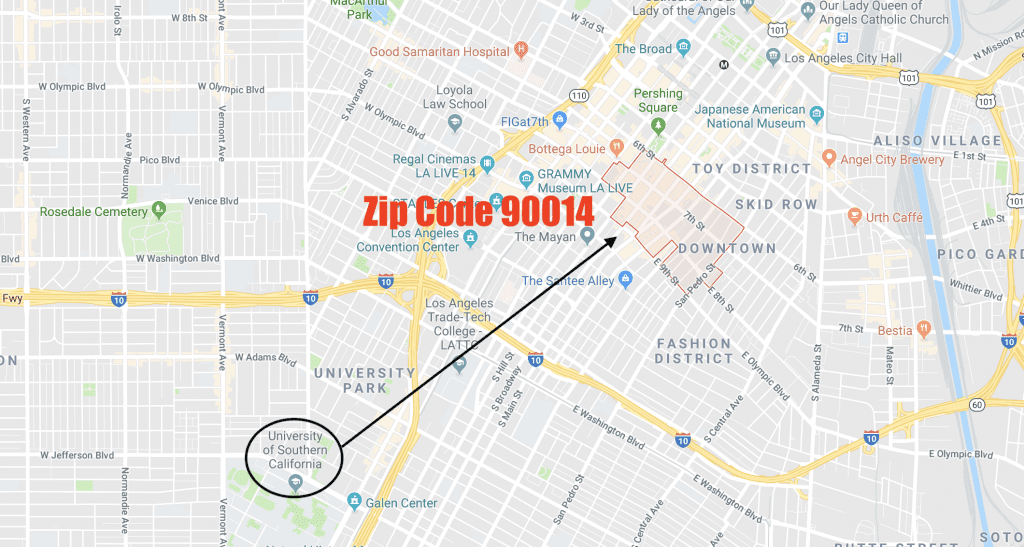
Located less than five miles away from ZIP code 90014 in Los Angeles, USC Marshall is just on the edge of the most gentrified area in the U.S. Over the last 16 years, this area has witnessed:
- A 707 percent increase in home values
- A 95 percent increase in median household income
- And an 857 percent increase in people holding bachelors or higher degrees
So, while some at USC might be fighting gentrification, it may not be working. Just last year, USC opened up a brand-new $700 million USC Village with a Target Express, Trader Joe’s, and 15 restaurants, transforming the surrounding neighborhood. And even though as part of the development USC provided $20 million for construction of off-site subsidized housing, there are still concerns.
“Across the street, land values are going to increase,” Joe Donlin, Associate Director of Strategic Actions for a Just Economy, told KPCC. “We know the landlords are going to rent at higher levels of rent.”
-
Howard University
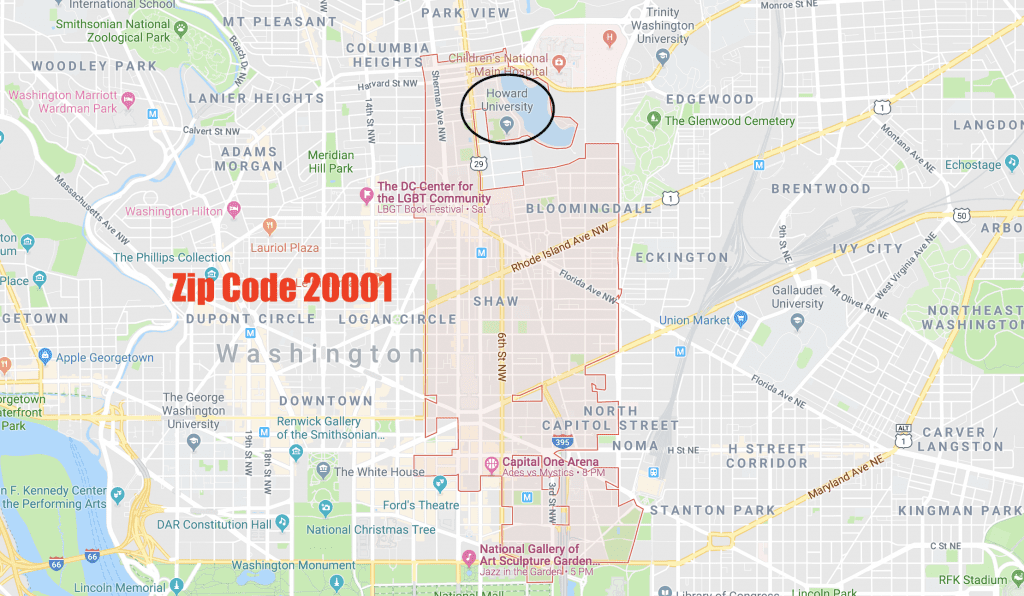
Located in Washington, D.C. Zip Code 20001, Howard University’s campus is located directly in the second most gentrified area in the U.S. Over 16 years, the area has witnessed:
- A 207 percent increase in home values
- A 163 percent increase in median household income
- And a 212 percent increase in people holding bachelors or higher degrees
The gentrification statistics of the Howard University area hasn’t gone unnoticed. According to NPR, there has been a drastic change:
“The area, located just a couple of miles north of Capitol Hill, was once working-class and black. But as hundreds of new residents move to D.C. each month, more non-black residents move into Howard’s neighborhood. And as property values rise, the university is trying to capitalize on the hot real estate market.”
-
University of Houston — Downtown
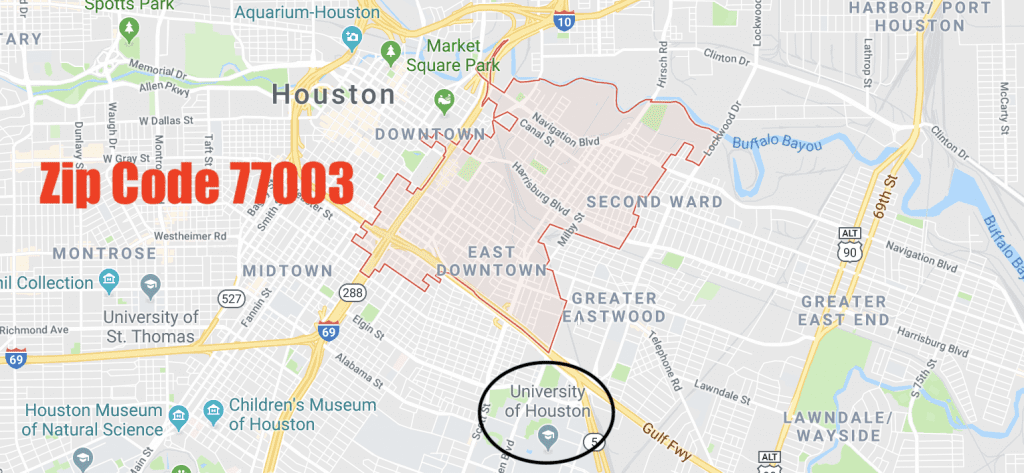
Located just steps away from zip code 77003, The University of Houston campus is located near the third most gentrified area in the U.S. In the last decade and a half, the area has seen:
- A 284 percent increase in home values
- A 71 percent increase in median household income
- And a 443 percent increase in people holding bachelors or higher degrees
Much of the gentrification can be laid at the university’s feet as its student housing footprint has expanded into surrounding neighborhoods over the last decades. According to the Houston Chronicle, “In the portion of the neighborhood closest to downtown, which includes Emancipation Park, median home values increased 176 percent between 2000 and 2013, according to an analysis of census estimates conducted by Governing.”
-
University of Pennsylvania
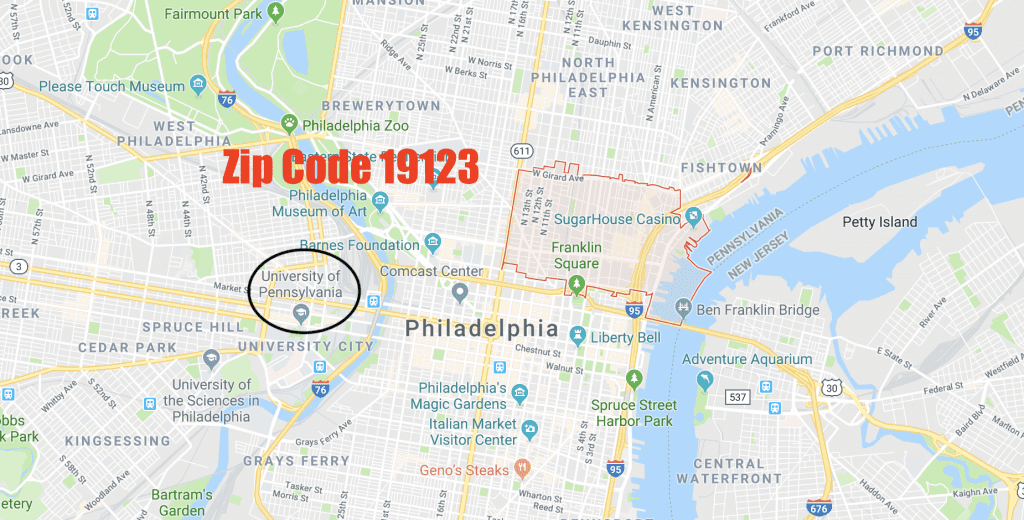
The Wharton School at UPenn is less than five miles outside the fourth most gentrified neighborhood in the country: zip code 19123. This area, over the last 16 years, has noticed:
- A 203 percent increase in home values
- A 95 percent increase in median household income
- And a 230 percent increase in people holding bachelors or higher degrees.
In fact, UPenn has had a complicated history with gentrification over the years, dubbed Penntrification by some. The problem, according to The Daily Pennsylvania, is that in West Philadelphia Penn students’ demand for housing is displacing low-income families. There have even been protests criticizing the university for causing gentrification in the area.
-
Texas Christian University
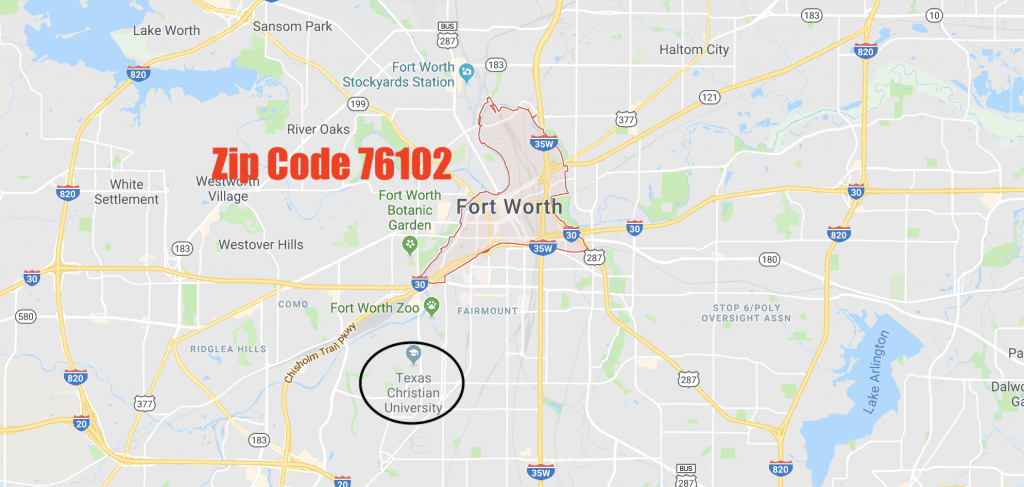
Fort Worth, TX, contains the sixth most gentrified area in the U.S.; just two miles away from Texas Christian University (TCU). Over 16 years, the area has witnessed:
- A 323 percent increase in home values
- A 103 percent increase in median household income
- And a 122 percent increase in people holding bachelors or higher degrees
While Fort Worth’s growth has brought new life to the city’s urban core, it’s also sky-rocketed property values. In particular, the areas around TCU are growing quickly. The university recently completed a $100 million renovation for its football stadium—just five years after its last overhaul, which reportedly cost $164 million.
In Search of the Best MBA Internships in the Bay Area

It’s not just the entrepreneurship and technology boom of the past thirty years that has brought San Francisco into prominence as a major city for business. In fact, the city’s legacy as a center for banking and finance can be traced all the way back to the years of the gold rush. From it’s nickname as the “Wall Street of the West” to its role today as a hub for technology and social media companies, San Francisco has long been a city where young business professionals can thrive.
MBA programs in the metro offer opportunities for students to connect with local organizations through Bay Area internships and corporate partnerships. These internship opportunities, the majority of which are arranged through campus recruitment or university networking, frequently open the door for full-time employment and ongoing career training. Below, we’ve rounded up just a few of our favorites.
The Best Bay Area Internships for MBAs
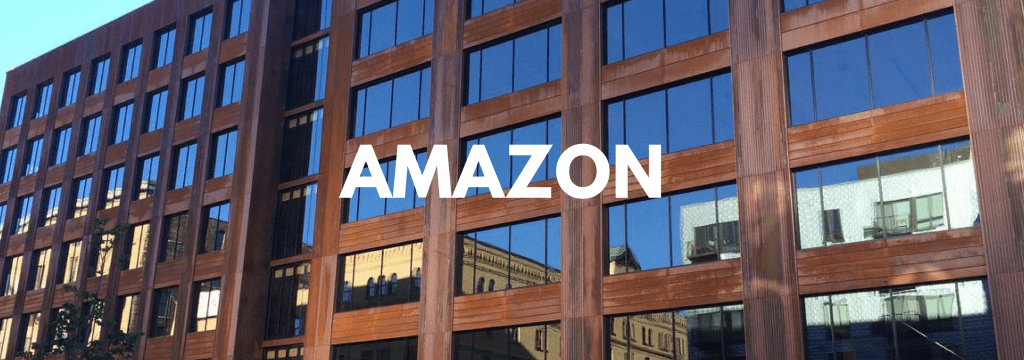
Amazon consistently makes the lists of top employers, both for full-time positions and summer internships, for graduates from universities like the UC Davis Graduate School of Management, SJSU’s Lucas Graduate School of Business, and the Haas School of Business at UC Berkeley.
This likely doesn’t come as a surprise. With an extensive reach into the retail, tech, and entertainment industries, Amazon has made headlines in the past years for its vigorous hiring of MBA students and graduates. In 2015, the company was the number one employer for graduating MBA students, and it doesn’t look like that trend will change any time soon.
Amazon has hired more Haas MBAs for employment and internships than any one company has in recent history (33 in 2017). There are also currently 165 Haas alumni already working at the company, who continue to play a large role in the recruitment and onboarding process for new hires.
One reason that might explain the staggering number of Haas MBAs joining Amazon is the company’s vigorous recruitment process, which begins early in fall and provides practice for case interviews. According to MBA alum Carolyn Chuong, now a Senior Product Manager at Amazon, the Amazon corporate culture and Berkeley’s academic philosophy are a good fit for each other.
“Haas and Amazon have cultures that value feedback,” she said.
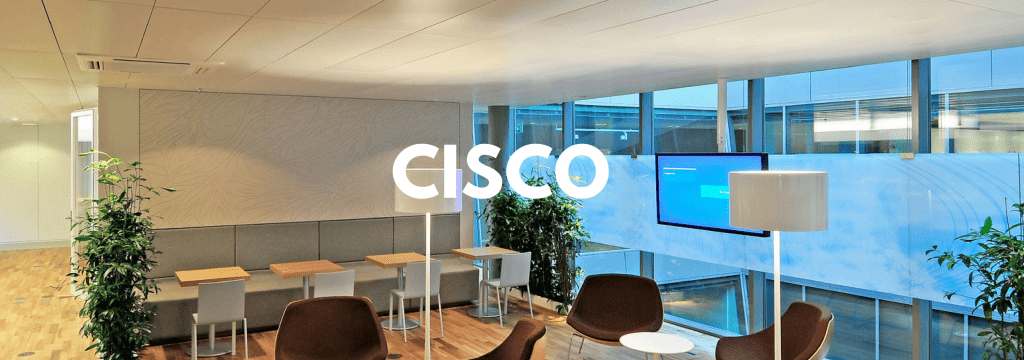
San Francisco’s role today as a hub for technology may help explain why Cisco Systems, an American multinational technology company headquartered in San Jose, is one of the top internship destinations for MBA students at schools like Haas, SJSU, and the University of San Francisco School of Management.
For students both in and out of the tech fields, Cisco offers internship opportunities in fields like marketing, security, supply chain, operations, human resources, and more. Schools like the San Jose State University even offers special opportunities through their corporate partnership with Cisco, such as a unique MS Software Engineering, specialization in cybersecurity available only for employees.

Listed in 2017 as the most visited website in the world, Google seems to have no limits to how far the company might grow. Headquartered in Mountain View, California, Google now employs more than 85,050 people around the globe. Talented MBAs who can break into the company can make, on average, nearly $6,000 per month as an intern, not to mention attractive benefits like free food, gym membership and transportation. Simply put, a stop at Google is one of the most attractive Bay Area internships out there.
Not surprisingly, Stanford University Graduate School of Business and Berkeley Haas have the most alumni currently with Google. San Jose State University and UC Davis grads are also prolific at the company, among other top schools like Cornell, Harvard, and MIT. Landing an internship at Google can be an incredibly challenging process. With high rates of alumni from California schools working at the company, students can leverage their university’s professional network to make connections and get their foot in the door.

Tesla, a multinational corporation specializing in renewable energy, offers a large number of internships and co-ops for MBA students. With its headquarters in Palo Alto, CA, and a commitment to taking on some of the world’s most important problems, it’s understandable why students at schools like USFCA, UC Davis, and SJSU seek out internship opportunities with the company.
“My experiences as a Tesla intern are some that I will take with me for the rest of my career,” one Tesla intern said on her experience. “I had the opportunity to tackle problems that were challenging, unique, and relevant—and within several weeks, I was trained to weigh in on decisions that would affect an entire production line.”
According to Tesla, interns and co-ops will be matched with teams and projects based on their background and career goals. Many Tesla interns have returned to the company in a full-time role after graduation.
June MBA Deadlines You Need to Know

Don’t be left behind, and get a jump on the MBA application process this June! Here’s your guide to this month’s MBA admissions deadlines in our top metros. Continue reading…
Meet Leading Admissions Directors, Clear Admit Editor-in-Chief at Upcoming Events in San Francisco, DC

Admissions directors from seven leading business schools will convene for two upcoming multi-school MBA admissions events, one next week in San Francisco and a second the following week in Washington, DC. Moderated by Clear Admit Editor-in-Chief Jeanette Brown, each event will feature representatives from Berkeley’s Haas School of Business, Cornell’s S.C. Johnson Graduate School of Management, Duke’s Fuqua School, Michigan’s Ross School, NYU Stern School, UVA’s Darden School, and Yale School of Management (SOM).

As part of these unscripted discussions, admissions directors will share tips not available on the schools’ websites as they answer hard-hitting questions designed to give attendees a head start on the application process. Applicants themselves will have an opportunity to pose their own questions both as part of a Q&A session at the end of the moderated panel discussion, as well as during an hour-long admissions fair that will take place during the second hour of each event. During the admissions fair, alumni from participating schools will also be present to answer questions about student life and the culture at each school.
The first event will take place at the San Francisco Omni Hotel, located at 500 California Street, on Thursday, May 10th, from 7 to 9 p.m. The second will take place at the Renaissance Washington, DC Downtown Hotel, located at 999 9th Street, NW, on Wednesday, May 16th, also from 7 to 9 p.m. The doors will open at 6:30 p.m. for each event, and attendees are encouraged to arrive early for registration and informal mingling with admissions directors and alumni from the participating schools.
These events are open to anyone looking to apply to or enroll in an MBA program, especially the full-time programs at the host schools. Both events are free, but advance registration is requested. To register for the San Francisco event, click here. To register for the DC event, click here.
Don’t miss this great opportunity to learn firsthand about seven leading business schools in a single evening. Walk away with a firm understanding of the general MBA application process and increased confidence in your approach, having gotten to know admissions personnel and alumni from each of the host schools.
The 5 Highest Paying Marketing Jobs for MBAs

Marketing is one of the most popular career paths for an MBA—2.9 times as popular as other careers according to PayScale—and with good reason: about 69 percent of marketing MBAs report a high level of job satisfaction. Besides, marketing MBAs are paid well. While the starting median pay (with a max of five years of experience) is only $55,700, after ten years, pay jumps to $116,000—a 108 percent growth between starting and mid-career salary.
The question then is, “What are the highest paying marketing jobs for MBAs?” The answer isn’t as cut and dry as you would think. It varies significantly between companies, level of experience, location, and job type.
Companies Recruiting Marketing MBAs
Where you work can have as a profound of an impact on your pay as your actual job function. That’s because larger companies tend to pay higher salaries, and how a particular company views the marketing department can also influence how much they are willing to pay. Below are five of the highest paying marketing jobs, according to PayScale.
- Microsoft Corp: $95,146 – $152,605
- IBM Corp: $91,158 – $132,500
- Dell, Inc: $77,511 – $130,000
- Starbucks Corp: $115,436 – $121,097
- Amazon: $90,000 – $122,500
Experience
According to PayScale, experience plays a big role in how much you earn as a marketing professional. After graduating with an MBA in business and marketing, the average salary you can expect based on your years worked is:
- Less than one year: $54,721
- One to four years: $59,343
- Five to nine years: $81,097
- Ten to 19 years: $104,070
- Over 20 years: $124,631
Location
Where you work, can have a significant impact on what you’re worth. As always, large cities tend to pay more, but that’s still not always a guarantee. So, where are the most popular cities for marketing professionals and how much do they pay (average salary)?
- Seattle, WA: $119,266
- San Francisco, CA: $118,330
- Boston, MA: $104,217
- Dallas, TX: $100,237
- NYC, NY: $96,387

The Top MBA Marketing Jobs
There are dozens of different marketing positions that an MBA graduate can choose. If you’re looking to choose the highest paying marketing job, then you’ll want to choose one of the following five jobs. These are the top salaried positions for marketing MBAs (just be sure to keep in mind the company, location, and your experience if you want to earn the most money).
-
Vice President Marketing ($100,000 – $186,000)
As a Vice President of Marketing, you will offten be responsible for reporting your company’s marketing efforts to the board of directors or other highly-placed executives. Your main responsibility will be to determine the best strategies to improve your market-shares for goods and services sold. You’ll also be responsible for your company’s brand, including presenting the company’s assets and products. Common tasks include:
- Forecasting and strategic planning.
- Directing and setting the strategic direction of the marketing program.
- Overseeing all marketing staff operations, policies, and plans.
For MBA graduates, becoming a VP of Marketing is the highest paying position you can attain. On average, you’ll earn $143,571 plus a bonus between $4,939 and $49,935. As for where you’ll get paid the most, look for jobs in:
- San Francisco: 21 percent more
- Charlotte: 11 percent more
- Boston: 10 percent more
-
Marketing Director ($66,000 – $158,000)
Marketing Directors are responsible for managing and directing all marketing tasks. You’ll oversee the many marketing professionals under your purview and ensure that they meet company goals, requirements, and needs. In addition, you’ll be responsible for developing marketing projects, running successful marketing campaigns, monitoring budgets, resolving team issues, and communicating with clients, vendors, and other team managers within your company. Common tasks include:
- Overseeing marketing staff, advertising budget, and business planning.
- Directing and planning marketing strategies.
- Acting as the marketing subject matter expert.
On average, a Marketing Director with an MBA can expect to earn $106,684. However, that salary can greatly increase depending on the company you work for. The top companies are:
- Medtronic, Inc: $175,000
- Microsoft: $164,848
- IBM: $147,215
-
Senior Marketing Manager ($73,000 – $147,000)
As a Senior Marketing Manager, you’re in a middle-management position. Typically, you report to the Marketing Director and are responsible for researching target markets, providing feedback on product development, running product teams, planning display marketing, and working with various other teams to develop marketing objectives and goals. Common tasks include:
- Managing training and development of marketing staff.
- Managing and analyzing marketing programs for optimized results.
- Developing, recommending, and implementing marketing programs and campaigns.
On average, you can expect to earn $111,476. To earn the most, you’ll want to look at jobs at:
- Microsoft: $138,598
- Medtronic, Inc: $128,104
- Amazon.com: $126,774
-
Brand Manager ($68,000 – $132,000)
As a Brand Manager, you’ll be responsible for many of the customer-facing operations in the marketing department. Your job will be to control and manage all the ways that the company is exposed to the public including consumer attitudes, staff communication, and more. Common tasks include:
- Leading the brand strategy.
- Researching customer attitudes and developing plans and projects to support positive experiences.
- Leading consumer communication in each marketplace.
On average, a Brand Manager earns $102,309 as an MBA graduate with a yearly bonus between $795 and $19,644. To earn the most money, you’ll want to work in:
- San Francisco: 41 percent more
- Seattle: 36 percent more
- Chicago: 16 percent more
-
Product Marketing Manager ($60,000 – $130,000)
A Product Marketing Manager knows the company’s products inside and out. They are responsible for conducting research and determining a strategy for selling each product to generate the highest revenues. You’ll also be responsible for overseeing how each product is seen by the public from advertising to press releases and more. Common tasks include:
- Developing product marketing strategies to maximize revenue.
- Researching consumer opinions on products to aid performance.
- Collaborating with design to meet consumer expectations.
On average, a Product Marketing Manager will earn $105,942, which is pretty consistent between companies. The best paying companies are:
- Google: $115,723
- Microsoft: $115,481
- AT&T: $112,020
What is the Most Valuable San Francisco MBA?

There’s no doubt: San Francisco is a great city to earn your MBA. Located near Silicon Valley, business schools throughout the area provide not only an excellent education but also opportunities to interact with many tech and industry leaders in the area. But which MBA programs in San Francisco are the best?
This is not an easy question to answer. You can check rankings, to see which MBA programs perform well based on surveys and statistics provide to The Financial Times, U.S. News and World Report, and The Economist. And that’s a great place to start, but probably the most essential value when determining the right MBA program for you is your return on investment (ROI).
The ROI of an MBA program is one of the best indicators of what your MBA is actually worth. It looks at statistics such as average salary increase, post-graduation employment, tuition cost, cost of living, and more. To help you out, we looked in-depth at the best business schools in San Francisco to see which offer the best ROI. Continue reading…

